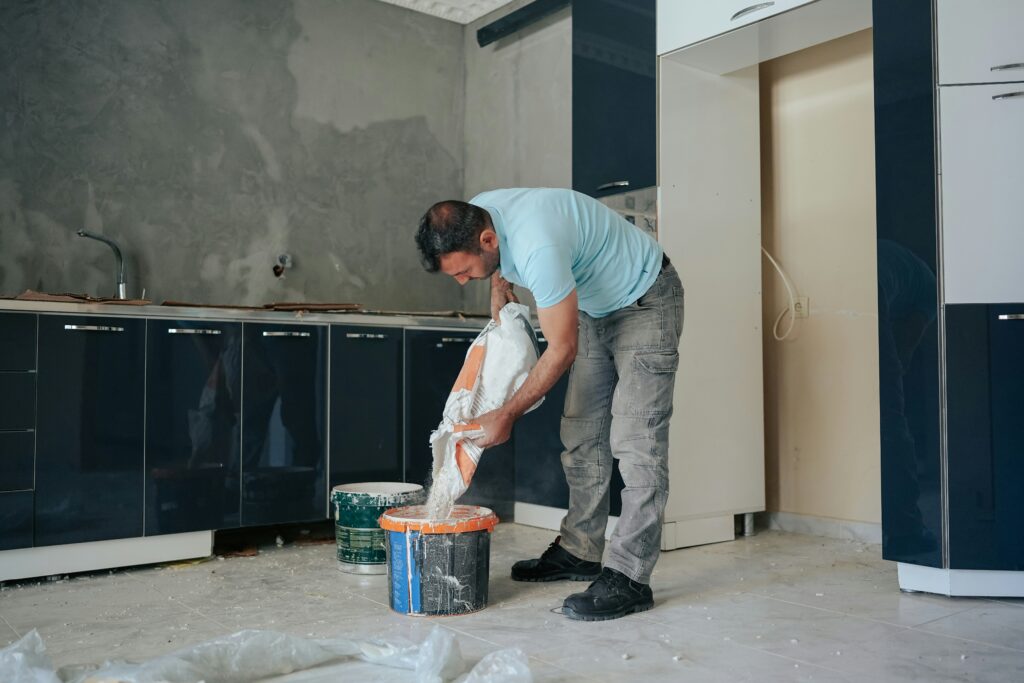Table of Contents
Introduction
Painting a home or business is about more than just color—it’s about creating healthier spaces while reducing environmental impact. In recent years, Sustainable Painting has grown from a niche concern to a mainstream expectation. Today’s homeowners, businesses, and professional painters alike are embracing low-VOC paints, eco-friendly coatings, and green painting practices that promote both beauty and responsibility.
If you’ve ever walked into a freshly painted room and noticed a strong chemical smell, you’ve experienced volatile organic compounds (VOCs). Traditional paints release VOCs into the air, which can affect indoor air quality and harm the environment. The good news is that better alternatives exist. From non-toxic paint options to environmentally friendly paint finishes, sustainable products now provide performance without compromise.
In this guide, we’ll cover everything you need to know about Sustainable Painting—from choosing the right products to applying best practices that save energy, protect your health, and create long-lasting results.
👉 Need experts to transform your home the eco-friendly way? Discover our Residential Painters in Brisbane and see how we can help.
What Is Sustainable Painting?
At its core, Sustainable Painting means using materials and methods that minimize negative effects on people and the planet. It’s about:
Reducing harmful emissions by using low-VOC paints.
Choosing eco-friendly coatings derived from natural or renewable resources.
Implementing green painting practices that reduce waste and improve energy efficiency.
Selecting non-toxic paint options that keep homes healthier.
By prioritizing sustainability, painters and homeowners ensure that a beautiful finish doesn’t come at the expense of indoor air quality or the environment.
Why Choose Sustainable Painting?
1. Protecting Indoor Air Quality
VOCs released from traditional paints can linger indoors for months. These emissions affect air quality, especially in poorly ventilated areas. Low-VOC paints drastically reduce these risks, making your home safer for children, pets, and anyone with allergies.

2. Supporting Environmental Goals
Paint production has historically been resource-intensive. By using eco-friendly coatings, which are often made with renewable ingredients or recycled materials, you directly reduce carbon footprint and pollution.
3. Long-Term Durability
Many environmentally friendly paint finishes are just as durable—if not more—than traditional products. Their improved formulas mean fewer repaints, less waste, and better long-term sustainability.
4. Health Benefits
Switching to non-toxic paint options minimizes exposure to harmful chemicals, creating a healthier living and working environment.
Understanding Low-VOC Paints
What Are VOCs?
Volatile organic compounds are chemicals that evaporate easily at room temperature. They are commonly found in paint, varnishes, and solvents.
Why Low-VOC Matters
Health: High VOC levels can cause headaches, dizziness, and respiratory irritation.
Environment: VOCs contribute to ground-level ozone and smog.
Compliance: Many regions now regulate VOC content, making low-VOC paints the new standard.
How to Identify Them
Look for certifications such as:
Green Seal
Greenguard
Global GreenTag
These labels guarantee that the paint meets strict environmental standards.
Eco-Friendly Coatings Explained
Not all paints are created equal. Eco-friendly coatings go beyond low-VOC formulas by focusing on sustainable sourcing and reduced environmental impact.
Common Types
Natural Paints
Made from clay, lime, chalk, or plant oils.
Biodegradable and free from synthetic chemicals.
Recycled Paints
Produced by reprocessing surplus or leftover paints.
Reduces landfill waste.
Water-Based Acrylics
Lower emissions compared to solvent-based paints.
Easy cleanup without harsh chemicals.
Green Painting Practices
Products matter, but so do methods. Adopting green painting practices ensures that the entire process supports sustainability.
Best Practices
Prep surfaces carefully to reduce unnecessary coats.
Use high-quality brushes and rollers that last longer and apply paint more efficiently.
Recycle leftover paint at designated centers.
Choose lighter colors where possible—light walls reflect more natural light, reducing energy use.
Non-Toxic Paint Options
When health is a top priority, non-toxic paint options are the safest bet. These paints avoid:
Formaldehyde.
Heavy metals like lead or cadmium.
Harsh chemical solvents.
Families with small children or anyone with respiratory conditions often choose these paints for peace of mind.

Environmentally Friendly Paint Finishes
The finish you choose also matters. Glossy paints may contain more binders and resins, while matte or natural finishes can be easier on the environment.
Popular Sustainable Finishes
Natural Oil Finishes – Derived from linseed or tung oil.
Milk Paint – Made from milk protein, lime, and natural pigments.
Clay Finishes – Offer a rustic look and natural humidity control.
Sustainable Painting for Residential Spaces
Homeowners are increasingly seeking Sustainable Painting for both interiors and exteriors. Common projects include:
Living rooms and bedrooms with low-VOC paints for healthier indoor air.
Kitchens and bathrooms with eco-friendly coatings that resist moisture.
Exterior walls with weather-resistant, environmentally friendly paint finishes.
👉 Explore how we bring sustainable solutions to homes at Residential Painters Brisbane.
Sustainable Painting for Businesses
Commercial spaces also benefit from sustainable practices:
Retail: Creating healthier spaces for customers.
Offices: Enhancing employee productivity with clean air.
Hospitality: Aligning with eco-conscious branding.
Business owners increasingly choose green painting practices as part of their sustainability initiatives.
How to Transition to Sustainable Painting
Audit Your Current Paint Products – Identify VOC levels and sustainability certifications.
Switch to Low-VOC Paints – Replace harmful formulas with safer alternatives.
Adopt Green Painting Practices – From prep work to waste management.
Partner with Professionals – Skilled painters ensure the right techniques and finishes.
Common Myths About Sustainable Painting
“Eco-friendly paints don’t last as long.”
→ Modern formulations are just as durable as conventional options.“Low-VOC paints are too expensive.”
→ Prices have become competitive, especially when factoring in long-term savings.“Color choices are limited.”
→ Today’s brands offer a wide spectrum of colors in non-toxic paint options.
The Future of Sustainable Painting
The market for Sustainable Painting is only growing. Innovations on the horizon include:
Paints made from algae and other renewable biomaterials.
Self-cleaning coatings that reduce maintenance needs.
Smart paints that regulate temperature, cutting energy use.
Conclusion
Whether you’re painting a bedroom, renovating a storefront, or refreshing an entire building, Sustainable Painting offers clear benefits. With low-VOC paints, eco-friendly coatings, green painting practices, and non-toxic paint options, you can create healthier spaces and contribute to a greener planet—without sacrificing style or durability.
Professional support ensures the job is done right the first time, maximizing your investment and reducing environmental impact.
👉 Ready to start your sustainable painting journey? Visit our Contact Us page or explore our homepage to learn more about eco-friendly painting solutions tailored for you.
FAQs
Q1: Are sustainable paints really as durable as traditional paints?
Yes. Modern low-VOC paints and eco-friendly coatings are formulated for durability and long-lasting finishes.
Q2: How can I dispose of leftover eco-friendly paint responsibly?
Take it to local recycling programs or paint recovery centers rather than pouring it down drains.
Q3: Can sustainable painting be done outdoors?
Absolutely. Many environmentally friendly paint finishes are designed to withstand outdoor weather conditions.






